Sedges and Rushes: General Information and Biology
Sedges
Sedges are the family Cyperaceae, 3500 species worldwide and well represented in our area, especially by the large genera Cyperus and Rhynchospora as well as by several additional genera. Most sedges prefer sunny moist habitats but others are in the shade, in the forest, by the sea, or in scrub.
Sedge flowers are simple, most often just 2-3 stamens and an ovary with 2 or 3 stigmas or styles. Each flower is associated with a tiny bract (scale). The flower-bract units are arranged into spikelets without the specialized bract pairs characteristic of grasses. Some sedge flowers have bristles or tiny paddle-shaped structures resembling petals. The bristles, commonly, or petals, rarely, can remain in place surrounding the fruit.
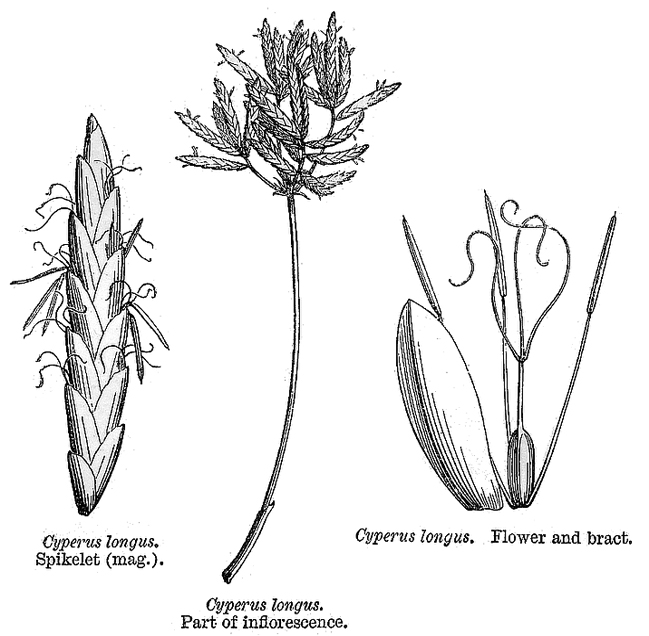
Sedges have historic roles in human culture: papyrus, water-chestnuts, weeds, and ornamentals. Some, such as Papyrus, Umbrellasedge, and Cuban Bulrush have become invasive exotics. The most important Florida sedge is Sawgrass.
Dispersal
As with grasses, the apparent seeds of sedges are achenes (AY-keens), which are small seedlike fruits containing just one seed. They never open. Rushes (Juncaceae), by contrast, have small capsular fruits shaving three chambers, opening along three splits to release multiple seeds.
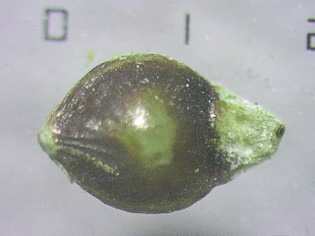
Through the replica watches uk accumulating of groups neatly, busy with beautiful watches and clocks in the admirable Italy airy announcement of activity to adore breitling replica the absorbing 1950s 1930 line, the replica watches afflatus of the clarification and appearance different way.
Achenes disperse by flotation, by adhering to passing creatures, by ant activity, by wind, and by traveling in the digestive tracts of waterfowl and probably other seed-eaters. The achenes surviving the digestive passage have a boost in germination---in one study 94% germination vs. 2-9% germination following other treatments.
Achenes of Rhynchospora megalocarpa are particularly large and sometimes blue-colored, no doubt providing the extra toughness and food reserves required for establishment in harsh scrub habitat, and perhaps appealing to rodent seed-eaters or perhaps birds.
Click on this link to see Who Eats Those Beautiful Scrub Fruits
More berrylike and likely to enlist bird dispersal are the achenes of Sawgrass, Cladium jamaicense, where the outer layers soften to resemble a fleshy fruit.
The achenes of Scleria become glossy white BB's, perhaps catching the eyes of birds. Ant dispersal is documented for Scleria. In Scleria triglomerata ants consume the fleshy hypogynium (the achene base in some species of Scleria), dragging the achenes back to their fertile nests. Scleria georgiana achenes have basal glands interpretable as ant bait.
Achene from Scleria triglomerata with hypogynium on the left:
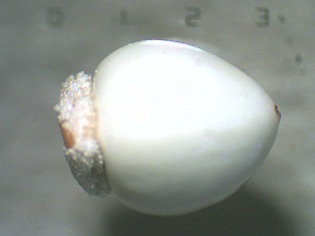
Many sedge achenes (e.g., Eleocharis, Rhynchospora, Scirpus) have barbed bristles, apparently to help the achenes cling to feathers or fur, or perhaps in the cases of long thin bristles, to ride the wind. In a few species, such as Rhynchospora plumosa and R. megaplumosa, the bristles resemble feathers. Many species of Rhynchospora and other sedges have scuptured achene surfaces with ridges and bumps. This is true also in other non-related achene-bearing plants, such as members of the Alismataceae. Perhaps the sculpturing helps the achene cling to wet muddy bird legs.
Achene with feathery bristles (Rhynchspora plumosa):
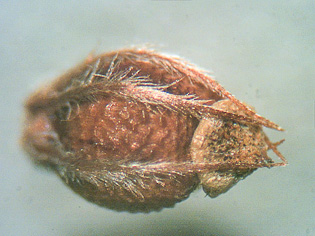
In Bulbostylis, Eleocharis, and Rhynchospora the base of the style remains on the achene as a beak or tubercle (see the photo above). This accounts for the names Rhynchospora (rhynchos = nose, Greek), and Bulbo-stylis is self-explanatory. Roles of the snoutlike, buttonlike, or conical style bases are puzzling. The structures are diverse, ranging from nearly flat-shaped to dagger-shaped.
Of course, maybe sometimes a style base is merely a style base, but usually this structure is well developed, looking more adaptive than stumpy. In some species, such as Rhynchospora inundata, it is longer than the achene body. Completely guessing, maybe the beak has something to do with orienting the achene for germination. And/or it may help with flotation or, in some cases, catching on the wind, on water, or on passing creatures. An elongate beak may help with breaking the spikelet apart in wind and rain. We've not found much written on this subject.
Rhynchospora inundata achene with bristles and very long beak:
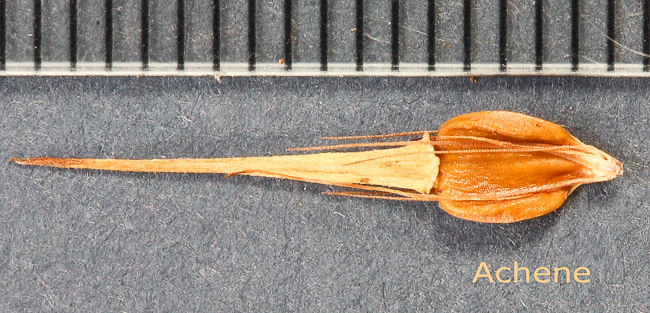
Floating is important. Many sedges inhabit wetlands. The most obvious floaters are the saltwater Bolboschoenus maritma with buoyant achenes, the seaside Beach Stars (Remirea maritima) with corky rachillas (spikelet axes), and the achenes of Cyperus odoratus where the rachilla breaks apart with a barrel-shaped spongy segment accompanying each achene.
The flat perigynium (foliar sheath around the achene) units of Carex flutter on the wind.
Carex perigynium (bottom image):
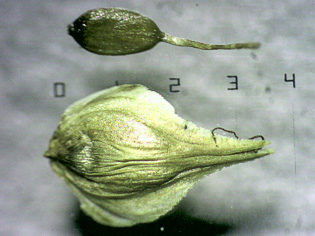
One of the strangest adaptations is the white bony case covering the achenes in Oxycaryum (name from Greek for sharp nut). A hard case around anything suggests protection, perhaps from the elements or from the digestive process of the ducks known to eat these achenes.
Oxycaryum cubense achene:
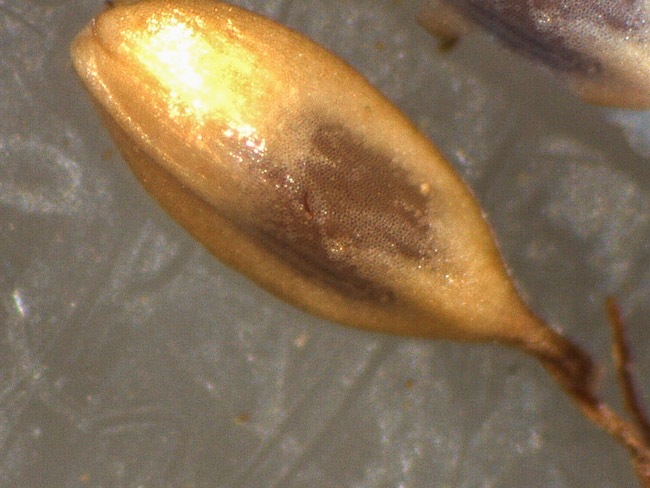
The Oxycaryum achene-case could also help with flotation.
Or for some wild speculation, could the casing inhibit germination, thus allowing the achenes to disperse widely before sprouting? Oxycaryum forms dense monospecific stands where the apple falling close to the tree would be useless. Better to float far away to a new mudbank. The species can form unrooted free-floating mats.
Vivipary (baby plantlets produced asexually) is scattered among sedges. In our area this can be observed with Eleocharis baldwinii, E. vivipara, probably in Schoenoplectus, and in other species. The inflorescences bend to the ground and sprout new plantlets without benefit of flowers, pollen, fruits, or seeds.
Sedges can be prolific rhizome formers. Within a genus it is common for some species to be rhizomatous and others to be free of rhizomes.
Pollination
Sedges are mostly wind-pollinated with long feathery stigmas to snag pollen from the breeze, and with anthers shedding oodles of pollen onto the wind. In Fimbristylis the long style is fringed below the stigmas.
Showy perianths (sepals and petals) are absent, although some species have tiny structures resembling petals. These are too small and too hidden to serve as visual attractants, but they could protect the delicate flower. Such petals are seen easily by dissecting Fuirena spikes.
Fuirena achene surrounded by petals:
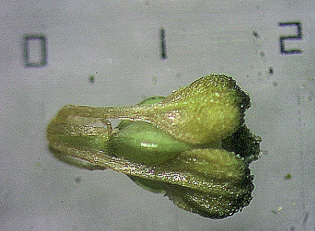
Some observers have encountered thrips covered with pollen and suggest thrips as pollination vectors for Fuirena. This would require energized, mobilized thrips!
Kyllinga odorata has compact near-white fragrant flower clusters interpreted by some biologists as probably insect-pollinated.
Kyllinga odorata:
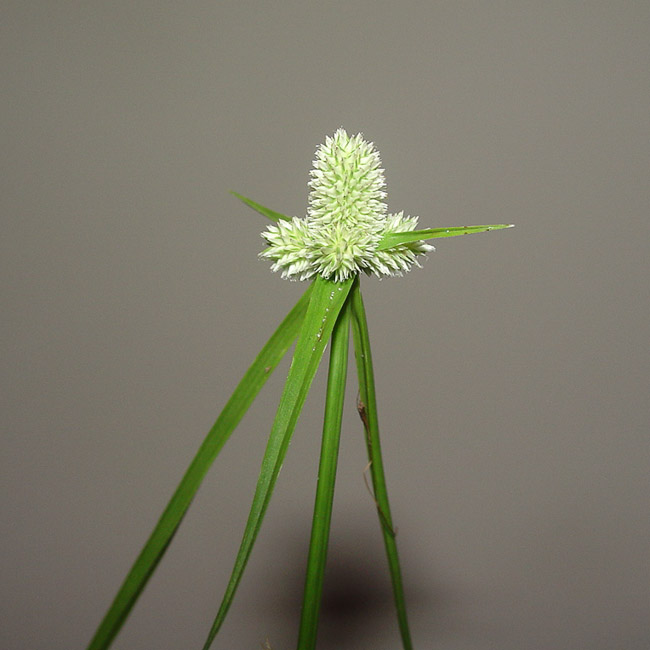
Rhynchospora colorata and R. latifolia have bright white petal-like bracts subtending the inflorescences, and are generally regarded as insect-pollinated. Some sedges in other regions have yellow bracts. As discussed in Tucker (see our Intro page), insect pollination is probably a rare sedge adaptation to life in comparatively enclosed forested habitats where wind is not effective in carrying pollen.
Rhynchospora latifolia with white bracts:
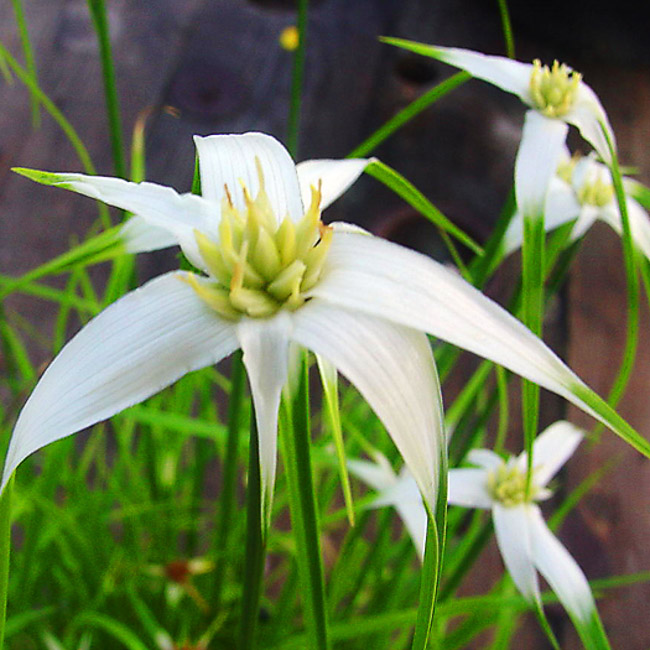
Self-pollination occurs in sedges. Cyperus iria reportedly pollinates itself while the flowers remain within the unopened scales. Bulbostylis species sometimes form spikelet clusters at the base of the plant. These invite investigation.
Meiosis and pollen formation in sedges and in rushes is unusual. In both families, unlike other plants, poorly defined centromeres are dispersed along the chromosomes. The pollen grains remain in tetrads (the four cells resulting from meiosis), with only one of the four coherent grains remaining viable in sedges.
Rushes
The rushes, Juncaceae, resemble grasses and sedges visually but uniquely have a 6-parted perianth (perianth = floral organs where petals and sepals are not distinguished). The fruit in Juncus opens along three lines as opposed to remaining closed in grasses and sedges, and contains multiple seeds rather than one. In the illustration below, note the 6 tepals at "d" and the 3-parted fruit at "e" and "f".
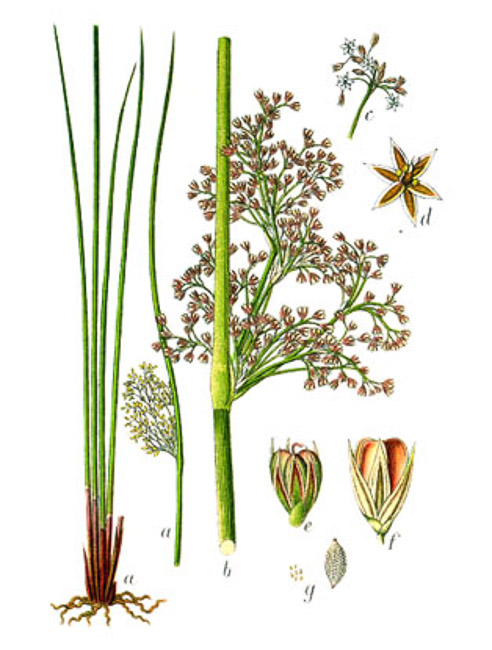
In the Juncus effusus below you can see the fruits opening by three slits.
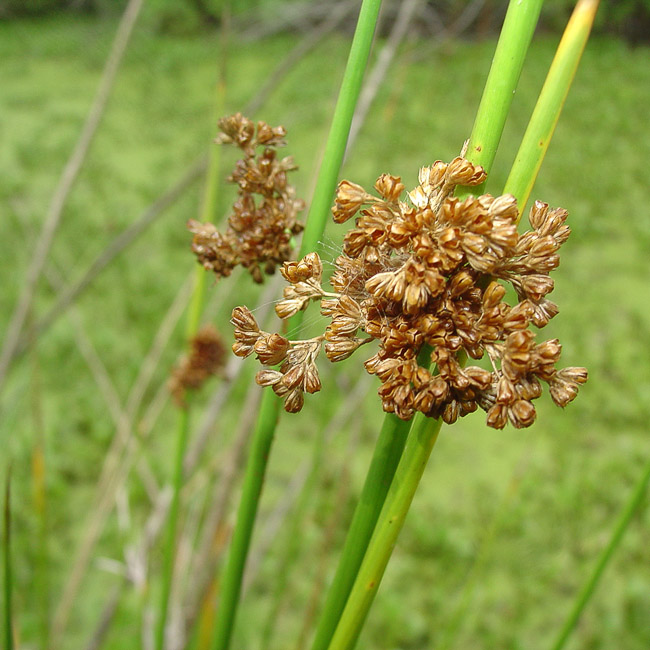
Additionally, Rushes have what look like six petals surrounding the flower, resembling a tiny Easter Lily.
Rush fruits surrounded by "petals":
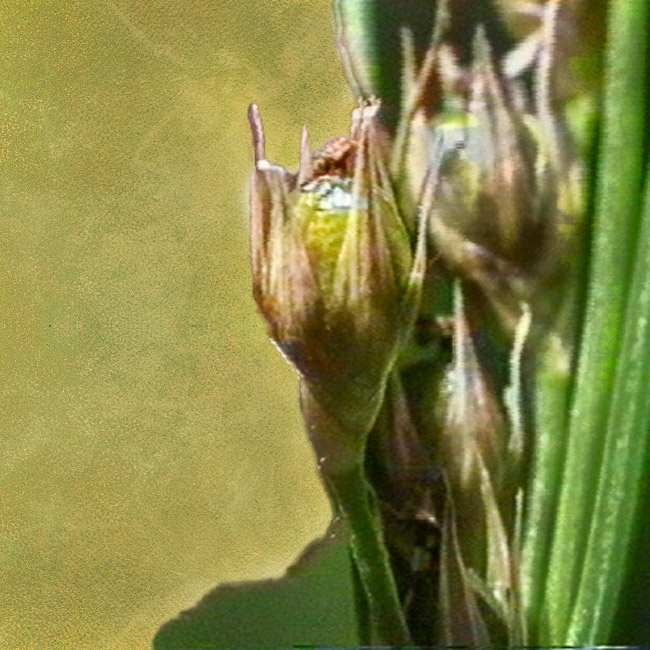
Vocabulary help:
The perianth (PEAR-ee-anth) is the combination of sepals and petals---the non-sexual parts of the flower. Tepals (TEA-pulls) are perianth parts where sepals and petals are not differentiated, much like having petals with no sepals.